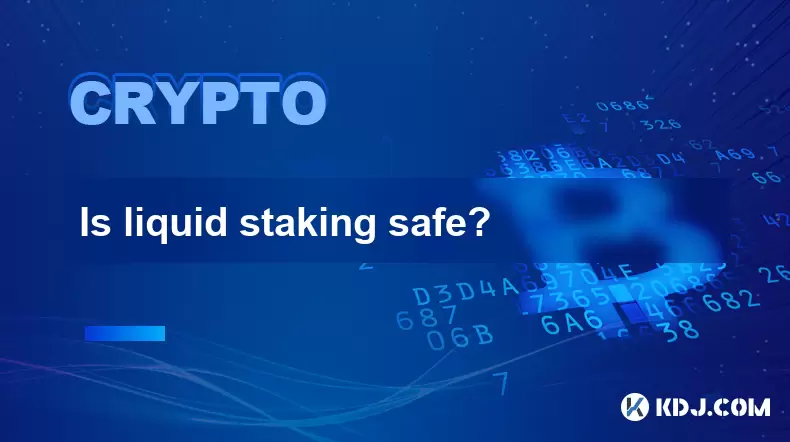-
 Bitcoin
Bitcoin $119000
0.17% -
 Ethereum
Ethereum $3664
-2.12% -
 XRP
XRP $3.229
-7.77% -
 Tether USDt
Tether USDt $1.001
0.02% -
 BNB
BNB $783.2
-1.48% -
 Solana
Solana $191.3
-5.26% -
 USDC
USDC $1.000
0.03% -
 Dogecoin
Dogecoin $0.2450
-7.74% -
 TRON
TRON $0.3115
-1.61% -
 Cardano
Cardano $0.8229
-6.80% -
 Hyperliquid
Hyperliquid $44.17
-2.93% -
 Stellar
Stellar $0.4343
-7.23% -
 Sui
Sui $3.792
-4.09% -
 Chainlink
Chainlink $18.38
-5.73% -
 Hedera
Hedera $0.2491
-7.79% -
 Bitcoin Cash
Bitcoin Cash $518.1
-1.51% -
 Avalanche
Avalanche $24.13
-5.84% -
 Litecoin
Litecoin $113.9
-5.41% -
 UNUS SED LEO
UNUS SED LEO $8.974
-0.21% -
 Shiba Inu
Shiba Inu $0.00001400
-7.98% -
 Toncoin
Toncoin $3.215
-2.09% -
 Ethena USDe
Ethena USDe $1.001
0.03% -
 Polkadot
Polkadot $4.178
-6.84% -
 Uniswap
Uniswap $10.38
-3.05% -
 Monero
Monero $317.8
-1.85% -
 Bitget Token
Bitget Token $4.733
-1.94% -
 Pepe
Pepe $0.00001293
-8.20% -
 Dai
Dai $1.000
0.02% -
 Aave
Aave $292.8
-4.74% -
 Bittensor
Bittensor $430.1
-3.67%
Is liquid staking safe?
Liquid staking lets users earn rewards by staking crypto while retaining liquidity through tradable tokens like stETH or stSOL, which can be used across DeFi platforms.
Jul 22, 2025 at 05:42 am

What Is Liquid Staking?
Liquid staking is a process that allows users to stake their cryptocurrencies while retaining liquidity. In traditional staking, users lock their tokens for a certain period to support a blockchain network's security and earn rewards. However, with liquid staking, users receive staked tokens in a liquid form, often represented as derivatives like stETH or stSOL, which can be traded or used in DeFi protocols.
This innovation has gained traction because it eliminates the opportunity cost associated with locking up funds. Liquid staking platforms such as Lido, Rocket Pool, and StakeWise offer this service on major networks like Ethereum and Solana. The core mechanism involves depositing tokens into a smart contract, which then distributes staking rewards in the form of these liquid tokens.
How Does Liquid Staking Work?
The process begins when a user deposits their tokens into a liquid staking protocol. Once deposited, the protocol stakes the tokens using validators and issues liquid tokens in return. These tokens represent the user's share of the staked assets plus accrued rewards.
- The user deposits native tokens (e.g., ETH) into the protocol.
- The protocol issues liquid staking tokens (e.g., stETH).
- These tokens can be transferred, traded, or used as collateral in DeFi applications.
- Rewards from staking are automatically reflected in the value of the liquid token.
The underlying smart contracts manage the distribution of rewards and validator responsibilities. This system ensures that users can continue to earn staking rewards while still engaging in other financial activities within the crypto ecosystem.
What Are the Risks Involved in Liquid Staking?
While liquid staking offers flexibility, it also introduces several risks that users should be aware of:
- Smart contract vulnerabilities are a primary concern. If the protocol’s code has bugs or is exploited, users may lose their staked assets.
- Centralization risks arise when a small number of validators control a large portion of the staked assets, potentially compromising network security.
- Impermanent loss can occur when users provide liquid tokens to DeFi liquidity pools, especially if the price of the staked asset fluctuates significantly.
- Slashing risks are also present. If a validator behaves maliciously or fails to perform duties, a portion of the staked assets may be slashed.
Users should carefully evaluate the security audits, decentralization level, and track record of any liquid staking platform before participating.
Is Liquid Staking Safe Compared to Traditional Staking?
The safety of liquid staking compared to traditional staking depends on the specific platform and its underlying mechanisms. Traditional staking typically involves fewer layers of abstraction and is often less exposed to smart contract risks. However, it lacks the liquidity and composability that liquid staking offers.
Liquid staking introduces additional counterparty risks, especially if the platform is centralized or not well-audited. On the other hand, decentralized liquid staking protocols that use permissionless validators and open-source code can mitigate some of these concerns.
It's important to note that liquid staking derivatives are not always pegged 1:1 with the native asset. For example, stETH has experienced depegging events during market stress, which could result in unexpected losses for users who are not aware of this dynamic.
How to Choose a Safe Liquid Staking Platform?
Selecting a secure and reliable liquid staking provider is crucial. Here are key factors to consider:
- Audit history: Look for platforms that have undergone multiple third-party security audits.
- Decentralization level: Protocols with a large number of independent validators are generally safer.
- Transparency: Choose platforms that offer real-time data on staking rewards, validator performance, and reserves.
- Tokenomics: Understand how the platform manages fees, slashing penalties, and reward distribution.
- Community and governance: Platforms with active governance and community-driven decision-making tend to be more trustworthy.
Avoid platforms that promise abnormally high yields or lack transparency about their operations. Always research the team behind the project and check for any red flags in their history.
Can Liquid Staking Be Used in DeFi Safely?
Using liquid staking tokens in DeFi can be profitable but also comes with unique risks:
- Protocol risk: DeFi platforms that accept liquid tokens may themselves be vulnerable to hacks or exploits.
- Market risk: The value of liquid tokens can fluctuate due to changes in staking rewards or network conditions.
- Liquidity risk: Some liquid staking tokens may have low liquidity, making it hard to exit positions quickly.
To mitigate these risks, users should:
- Only use well-established DeFi platforms with a history of security.
- Avoid over-leveraging their positions when using liquid tokens as collateral.
- Monitor the price stability of the liquid token and its peg to the native asset.
- Keep track of governance decisions that may affect the token's utility or value.
It's also advisable to diversify across multiple platforms and assets to reduce exposure to any single point of failure.
FAQs
Q: Can I unstake my tokens anytime with liquid staking?
A: Yes, one of the advantages of liquid staking is that you can trade or sell your liquid tokens anytime without waiting for the unstaking period.
Q: Are liquid staking tokens insured against loss?
A: Most liquid staking platforms do not offer insurance. However, some decentralized protocols may have insurance funds or slashing protection mechanisms in place.
Q: How are staking rewards distributed in liquid staking?
A: Rewards are automatically reflected in the value of the liquid token. As the protocol earns staking rewards, the token's value increases over time.
Q: Can I use liquid staking tokens across different blockchains?
A: Some platforms offer cross-chain bridges for liquid tokens, but doing so introduces additional risks related to bridge security and network compatibility.
Disclaimer:info@kdj.com
The information provided is not trading advice. kdj.com does not assume any responsibility for any investments made based on the information provided in this article. Cryptocurrencies are highly volatile and it is highly recommended that you invest with caution after thorough research!
If you believe that the content used on this website infringes your copyright, please contact us immediately (info@kdj.com) and we will delete it promptly.
- XRP, Solana, and Institutional Adoption: A New Era for Crypto?
- 2025-07-24 11:10:12
- Dogecoin, Remittix, and Crypto Protocols: The Evolution of Digital Finance
- 2025-07-24 10:50:12
- BlockDAG, Hedera, and Stellar: Charting the Course for Crypto's Future
- 2025-07-24 10:50:12
- BlockDAG's No-Vesting Edge: Can It Outpace Cardano's Price?
- 2025-07-24 11:10:12
- South Korea's Credit Card Industry Embraces Stablecoin Regulations: A New Era?
- 2025-07-24 10:30:12
- Bitcoin, SHIB, and Institutional Momentum: Decoding Crypto's 2025 Trajectory
- 2025-07-24 11:15:12
Related knowledge

Understanding the composition of a liquid staking token's yield
Jul 20,2025 at 09:07am
What Is a Liquid Staking Token?A liquid staking token is a representative asset issued to users who stake their native cryptocurrency on a proof-of-st...

Is it better to stake directly or use a liquid staking service?
Jul 22,2025 at 08:21pm
Understanding the Basics of StakingStaking in the context of blockchain and cryptocurrency refers to the process of locking up digital assets to suppo...

What to do during an LST depeg event
Jul 20,2025 at 04:57pm
Understanding LST Depeg EventsAn LST (Liquid Staking Token) depeg event occurs when the token, which is typically pegged to the value of the underlyin...

Can you provide liquidity with liquid staking tokens?
Jul 22,2025 at 10:22am
Understanding Liquid Staking TokensLiquid staking tokens (LSTs) are derivative tokens that represent staked assets on a proof-of-stake (PoS) blockchai...

What are the best wallets for storing LSTs?
Jul 21,2025 at 03:14pm
Understanding LSTs and the Need for Secure StorageLSTs, or Liquid Staking Tokens, are derivative tokens representing staked assets on a blockchain. Wh...

Step-by-step guide to liquid staking on Solana
Jul 20,2025 at 06:42am
What is Liquid Staking on Solana?Liquid staking is a mechanism that allows users to stake their cryptocurrency while retaining liquidity through the i...

Understanding the composition of a liquid staking token's yield
Jul 20,2025 at 09:07am
What Is a Liquid Staking Token?A liquid staking token is a representative asset issued to users who stake their native cryptocurrency on a proof-of-st...

Is it better to stake directly or use a liquid staking service?
Jul 22,2025 at 08:21pm
Understanding the Basics of StakingStaking in the context of blockchain and cryptocurrency refers to the process of locking up digital assets to suppo...

What to do during an LST depeg event
Jul 20,2025 at 04:57pm
Understanding LST Depeg EventsAn LST (Liquid Staking Token) depeg event occurs when the token, which is typically pegged to the value of the underlyin...

Can you provide liquidity with liquid staking tokens?
Jul 22,2025 at 10:22am
Understanding Liquid Staking TokensLiquid staking tokens (LSTs) are derivative tokens that represent staked assets on a proof-of-stake (PoS) blockchai...

What are the best wallets for storing LSTs?
Jul 21,2025 at 03:14pm
Understanding LSTs and the Need for Secure StorageLSTs, or Liquid Staking Tokens, are derivative tokens representing staked assets on a blockchain. Wh...

Step-by-step guide to liquid staking on Solana
Jul 20,2025 at 06:42am
What is Liquid Staking on Solana?Liquid staking is a mechanism that allows users to stake their cryptocurrency while retaining liquidity through the i...
See all articles

























































































